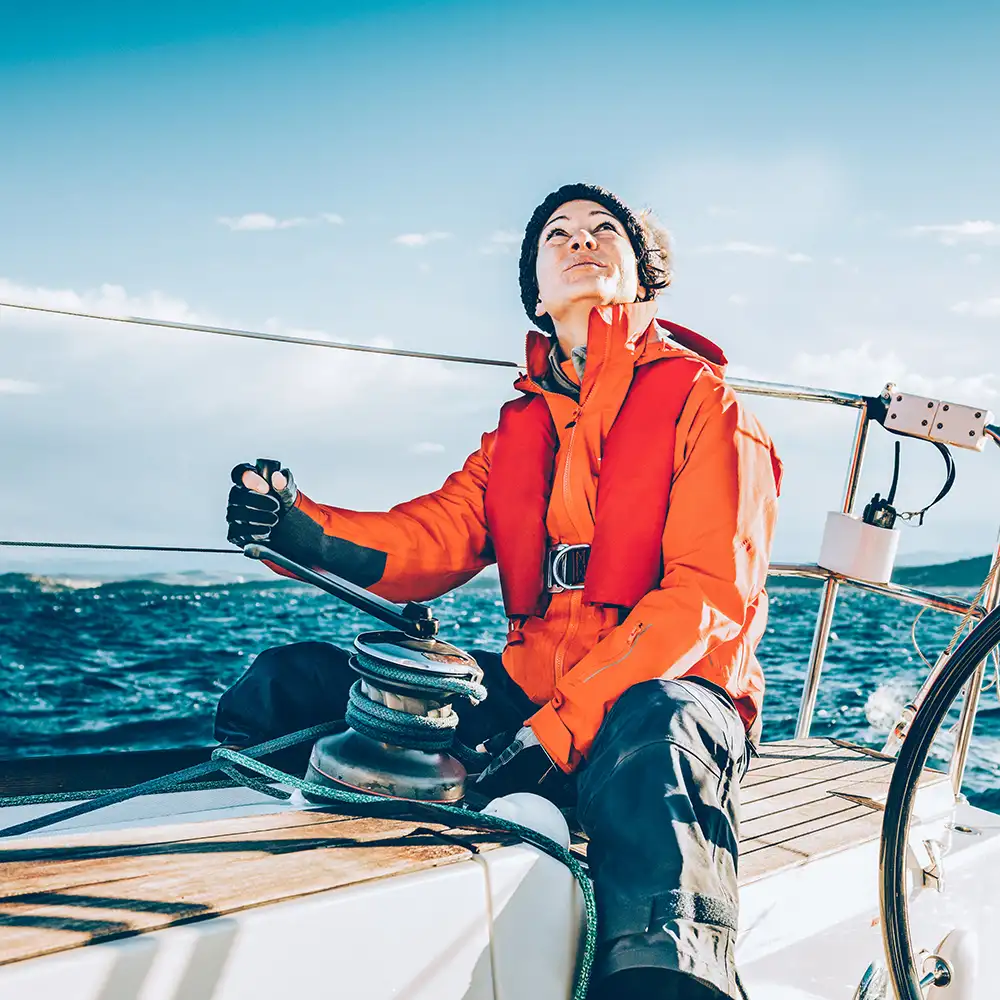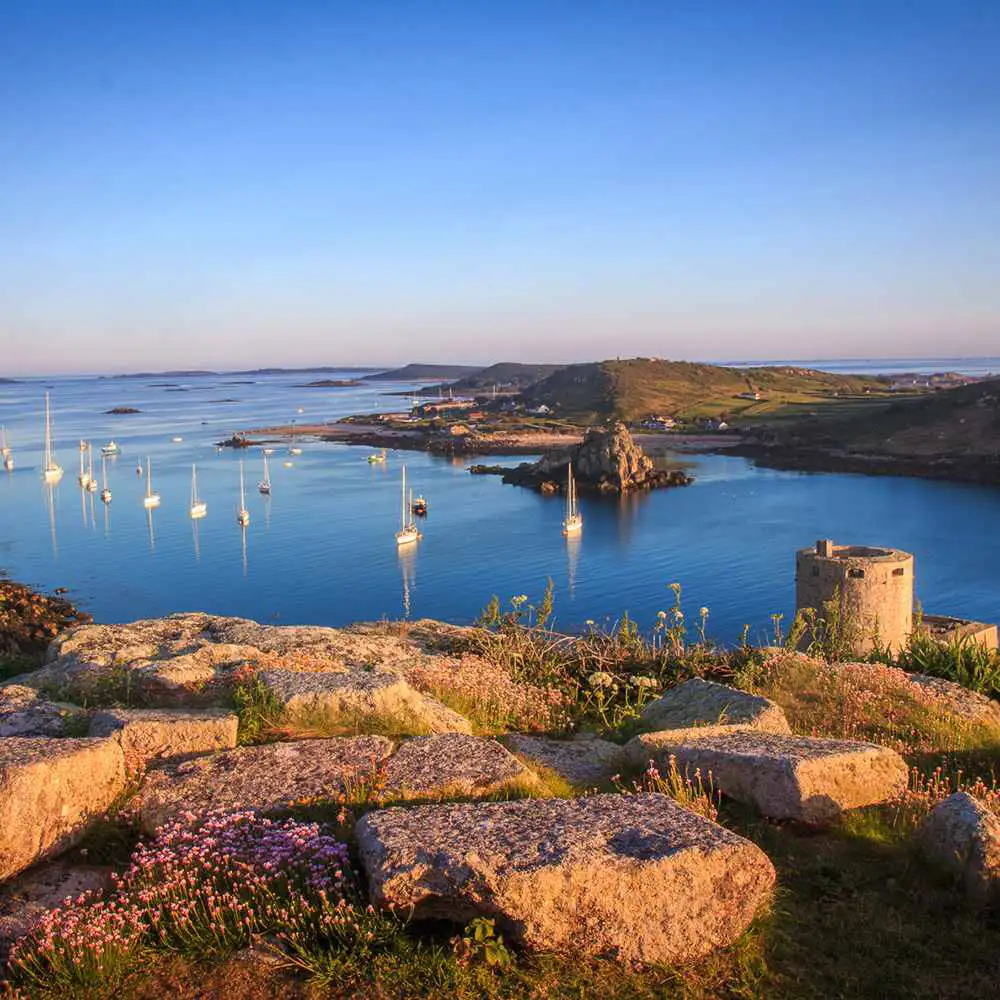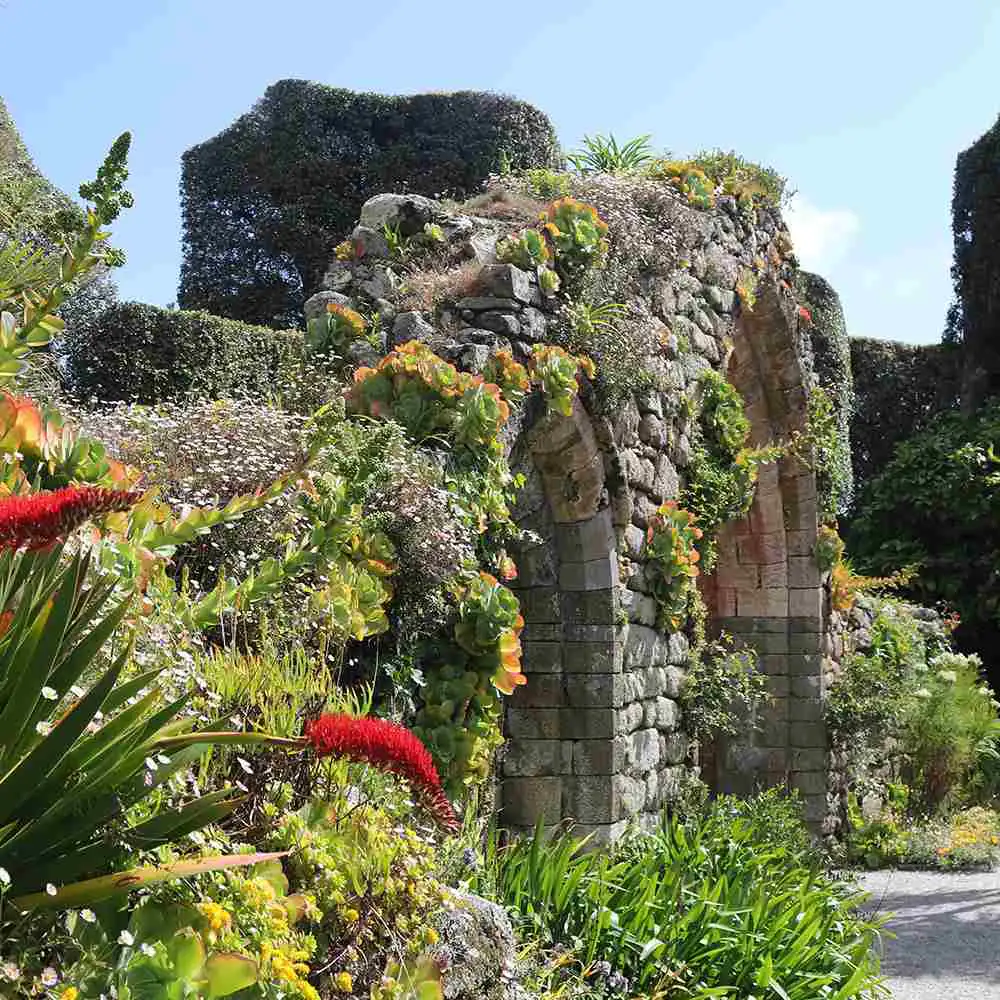An Isles of Scilly holiday with a difference has long been on my bucket list. The last few years have wakened the adventurer in me and been a timely reminder that we need to get on and live – hence how Alison my fiance and I found ourselves out in the Atlantic Ocean on a 60′ yacht, bound for the Isles of Scilly with Rubicon 3. If we couldn’t take on this type of adventure now, I reasoned, then when would we?
That might have sounded more reasonable over dinner when I raised the idea of forgoing the usual beach holiday for something just a little more out there. Now far out to sea, and worryingly no longer able to see the reassuring bulk of Land’s End, we both wondered what on earth we were doing.
Neither of us had sailed before, but we had been promised that having absolutely no idea what to do with the sails or in fact any other part of the yacht would be no barrier to taking part in one of Rubicon 3’s many sailing adventures. Our captain, the wonderfully calm and reassuring Matt, proved to be endlessly patient and took us through everything we needed to do. “The whole ethos of Rubicon 3“, he explained, “is helping complete novices experience the magical feeling of being at sea on a proper adventure.”
His simple explanations made the seemingly impossible collection of ropes, winches and clutches start to make sense and to my general astonishment, and particularly that of Alison, I found myself at the helm, holding a steady course and staying reasonably well on course. There were seven others on board and around half of us were absolute novices, while others had done some sailing in the past. We certainly weren’t a crack crew when we left, but quickly became quite the team.

Matt and his erstwhile first mate, Anne, had tasked two of the crew with navigating and it was with whoops of delight and no little pride that bang on time we saw the first of the low lying islands appear on the horizon. This determination that all the crew can get involved and be a central part of the adventure from day one is a huge part of the Rubicon 3 experience and really made it for us. Were we all helped more than we realised? Probably, but Matt and Anne certainly didn’t show it and by the time we were passing St Martin’s we certainly felt that we were genuine sailors.
After an exhilarating seven hours at sea, we had arrived in the subtropical paradise that is the Isles of Scilly. Their remote location out in the Atlantic Ocean puts them right in the path of the prevailing winds and storms, and they are often lashed by the best nature can throw at them. Yet they also benefit from the last of the warm waters of the Gulf Stream, and this gives them their unique microclimate. There may only be five of the one hundred and forty islands inhabited, but make no mistake – this is an extraordinary place unlike anywhere else in Britain. Palm trees, Caribbean like white sandy beaches and a relaxed way of life that makes visitors feel as though they have stepped back in time.

We made landfall in St Mary’s, with the yacht perfectly docked by Terry, another of us first timers. Anne the mate taught us how to ensure the boat was safely tied up, using a combination of breast lines and spring lines, and then we headed ashore to walk into Hugh Town, the ‘capital’ as such. A well-deserved lunch of wonderfully fresh fish was had at one of the restaurants and a browse of the various independent shops (no chains here), then we were off on a hike to explore.
The entire island is only two miles long and we chose to wander along the Garrison peninsula with its many batteries on the south-west corner of the island. Others toured the famous beaches of Porthcressa, Town Beach and Porthmellon.
The next morning, after a breakfast of bacon and eggs and seemingly endless cups of coffee, Matt brought out the chart and showed us our destination for the day: the anchorage at St Helen’s Pool. No distance in the Isles of Scilly is particularly far, so we had a leisurely departure and with a barely a breath of wind were content to drift slowly along, taking in the view.
By midday, the call was made to stop for lunch and we anchored at Great Gannily. We launched the RIB, and made an impromptu BBQ on the impossibly beautiful white sandy beach. Seals were lolloping around in the clear blue sea, and we truly felt we were on the perfect holiday. However, there is no rest for sailors (as we now considered ourselves) and soon we were summoned back to the yacht for the last sail of the day and our night’s anchorage.
Even sailing novices like ourselves could appreciate why this particular spot is so beloved of mariners. Tresco to the west, St Martin’s to the east, and the islands of St Helen’s and Tean to the north give it nearly 360 degrees shelter from the Atlantic swells. It was a prescient choice, for that night the wind was stronger than we had expected and Matt explained that in almost any other anchorage we would probably have had to leave. We took turns to sit up on deck for two hour watches, with good seamanship dictating that we ensure the anchor was holding and the yacht safe. This was no hardship, and with mugs of steaming cocoa in hand we chatted to our new friends about life’s dreams, adventures and plans. The peaceful simplicity and sense of purpose of that night is one I will remember for many years.![]()
The next morning, we took the RIB ashore again to visit the wonderfully named Hell Bay, famous for its shipwrecks, treacherous waters and rich history. It is set on Bryher – the smallest inhabited island of Scilly (1.5 miles long by half a mile wide). We found some lovely walks here lined with craggy rock outcrops. Long Atlantic swells were making landfall next to us and smashing over the outlying rocks and reefs with vast plumes of spray and noise. We felt like we were on the very edge of the Old World with nothing between us and America three thousand miles away. However, reality soon returned, and feeling we had earned it, we headed for the suitably named Hell Bay hotel for cold beers and great views.
With only a few days here, we could never hope to explore all the islands, so now we had a crew briefing every morning to choose where to go in the time we had left. Tresco, the second-largest of the islands and a subtropical gem, was the call for the day. Here we discovered an island of dramatic rocky outcrops, bronze age burial sites and romantic castle ruins. Tresco is also the home of the world-famous Tresco Abbey Garden, established on the island in the 1830s by Augustus Smith. It is a horticultural paradise with more than 20,000 exotic plants from all corners of the world – many of which cannot be grown anywhere else in Britain but in the Isles of Scilly. It was enough to make even a gardening neanderthal such as myself feel a little green-fingered. Having marvelled at the exotic flaura and fauna, we headed off for another explore, with some of us heading to Cromwell’s Castle, while others headed for the perfect white sands of Pentle and Appletree Bays.

On our last day in the Isles of Scilly, we chose to visit St. Agnes, the southernmost community in the United Kingdom and a wonderfully peaceful small island. It has the only dairy farm on the islands, and we were told it is the smallest one in England. With the light beginning to die, we just had time to try some of its famous ice creams before heading back to the boat. The farm rents out holiday cottages and tents and two weeks ago that would have been our choice. Our eyes had been opened however and we and the rest of the crew were already firm converts to the view that the only real way to visit the Isles of Scilly is by boat.
Sailing to the Isles of Scilly with Rubicon 3
Jeff and Alison were guests of Rubicon 3 on their Devon, Cornwall and Isles of Scilly trip. Trips run during the summer months and are 12 days long, taking in some of the coasts of Devon and Cornwall also. Prices are from £1,499 per person, with a 25% deposit reserving your berth. The company has full financial protection through the Protected Trust Scheme. Most of the crew join solo, but groups are welcome too. No previous experience is required and an RYA Competent Crew certificate can be earned as part of the package.
Other ways to enjoy Scilly
For those wanting a land based isles of Scilly holiday, the inhabited islands offer many alternatives, from self-catering holidays and hotels in St Marys to campsites on the surrounding islands. You can come for a weekend break or longer, but remember, Scilly travel is essentially foot and boat-based. For visitors, there is no car hire, no cars, no car parking – nothing! Your hotel can arrange a taxi.
When to go
June-August is the peak season for the islands, and temperatures can reach a lovely 21 degrees Celsius. However, costs are at their highest and availability at its least. September to mid-October can still have some favourable weather on Scilly, and of course, it means you can enjoy the islands when the tourists have all gone home.
A short history of Scilly
The earliest settlers to the Isles of Scilly were the tribes of Britons (ancient Brythonic people), believed to have arrived some 4,000 years ago when the islands were one landmass. Their various Bronze Age monuments can still be found across Scilly. In later years, the Isles of Scilly were prized for their ability to act as the gateway to the English Channel. The ruins of various Tudor fortifications can still be found on the islands, while Star Castle (now a luxury hotel with top class personal service) is only a short walk into Hugh Town.
Wildlife and nature on the Isles of Scilly
While the Scilly Isles are wild and windswept for much of the year, they still have rich woodlands, heaths, grasslands, wetlands and dunes, with many nature trails to explore. Visitors to St Martin can visit its famous flower farm. In the spring months, Scilly comes alive with wildflowers that cannot be found anywhere else. Bird lovers come here to see the thousands of seabirds that stop here on their long migratory journeys, while you will almost certainly see the famous Isles of Scilly seals.